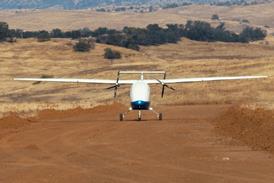LOCKHEED MARTIN'S plans to produce advanced derivatives of the F-16 combat aircraft have been dealt a blow with the United Arab Emirates (UAE) deciding to drop the F-16U from its strike-fighter competition.
The UAE's decision to reject the Lockheed Martin offer was because of the associated $2-3 billion development cost, say sources close to the programme. Lockheed is now offering the UAE F-16C/D Block 50 aircraft as a less costly (and less capable) alternative to the F-16U. The company was hoping to use the UAE as the launch customer for the advanced F-16 derivative. Lockheed Martin says that it could not comment on the range of F-16s being offered.
It had previously attempted to persuade Israel to procure the F-16 Enhanced Strategic variant of the F-16. This was optimised as a two-seat long-range strike aircraft. The Israeli air force purchased the McDonnell Douglas (MDC) F-15E instead.
Lockheed drew heavily on the projected F-16X programme for the F-16U, with the aircraft having a modified F-22 wing and advanced avionics. With wing tanks, the F-16U had a projected combat radius of over 1,850km (1,000nm).
Other competitors striving for the UAE's strike-fighter requirement include MDC, with the F-15U, an F-15E derivative; Dassault, with the Mirage 2000, followed by the Rafale; Sukhoi offering the Su-35 advanced Flanker; and the UK, pushing the Panavia Tornado interdictor- strike (IDS) aircraft, followed by the Eurofighter EF2000.
The UK is proposing to lease a dozen batch one Tornado IDS to the UAE for up to ten years.
Source: Flight International
















